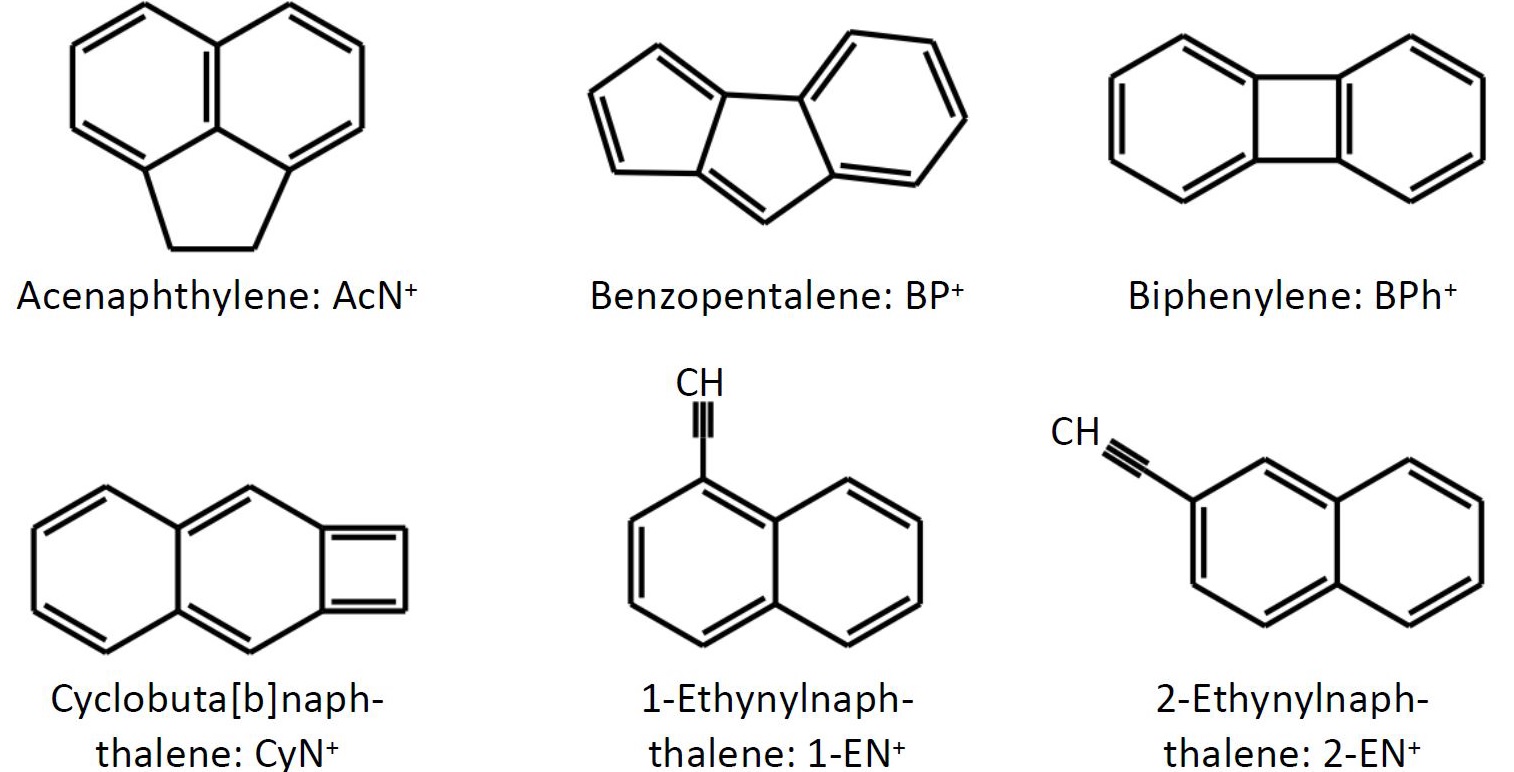Acetylene loss from anthracene and phenanthrene cations
Polycyclic aromatic hydrocarbons (PAHs) are believed to be the carriers of the ubiquitous aromatic infrared bands observed in the spectra of galactic and extra-galactic astronomical sources. These PAH IR emissions are caused by the absorption of UV photons originating from astronomical sources and subsequent infrared emission due to molecular relaxation[1]. The processing of PAHs by UV photons also leads to their fragmentation, which has been recognized in recent years as an alternative route to the generally accepted bottom-up chemical pathways for the formation of complex hydrocarbons in UV-rich interstellar regions[2][3]. Here we study one such fragmentation process, the loss of acetylene from the anthracene and phenanthrene (C14H10) molecules after electron impact ionization, resulting in a fragment ion with the chemical composition C12H8+. The dissociation product is expected to have many possible structures shown in the image. By employing the sensitive action spectroscopic scheme of infrared pre-dissociation (IRPD) in a cryogenic ion trap instrument coupled to the free electron lasers at the FELIX Laboratory[4][5], we have recorded the broadband and narrow line-width gas phase infrared spectra of the fragment ion (C12H8+) formed by dissociative ionization of the two precursor PAHs (C14H10), and also the reference spectra of three low energy isomers of C12H8+. Using DFT calculations at the B3LYP 6-311G(d, p) level of theory we have identified the dominant structure of the fragment isomers formed in the dissociation process. Molecular dynamics simulations (SCC-DFTB) will be presented in order to elucidate the fragmentation process.

[1] A. Tielens, Annual Review of Astronomy and Astrophysics 2008, 46, 289.
[2] J. Pety, D. Teyssier, D. Fossé, M. Gerin, E. Roue, ff, A. Abergel, E. Habart and J. Cernicharo, Astronomy & Astrophysics, 2005, 435, 885 - 899.
[3] Guzmán, V. V., J. Pety, J. Goicoechea, M. Gerin, E. Roueff, P. Gratier, and K. I. Öberg, 2015, Astrophysical journal, 2015, 800, L33.
[4] P. Jusko, S. Brünken, O. Asvany, S. Thorwirth, A. Stoffels, L. Meer, G. Berden, B. Redlich, J.Oomens, and S. Schlemmer, Faraday Discussions, 2019, 217 , 172-202.
[5] S. Banhatti, J. Palotás, P. Jusko, B. Redlich, J. Oomens, S. Schlemmer, S. Brünken, Astronomy & Astrophysics, 2021, 648 A61.